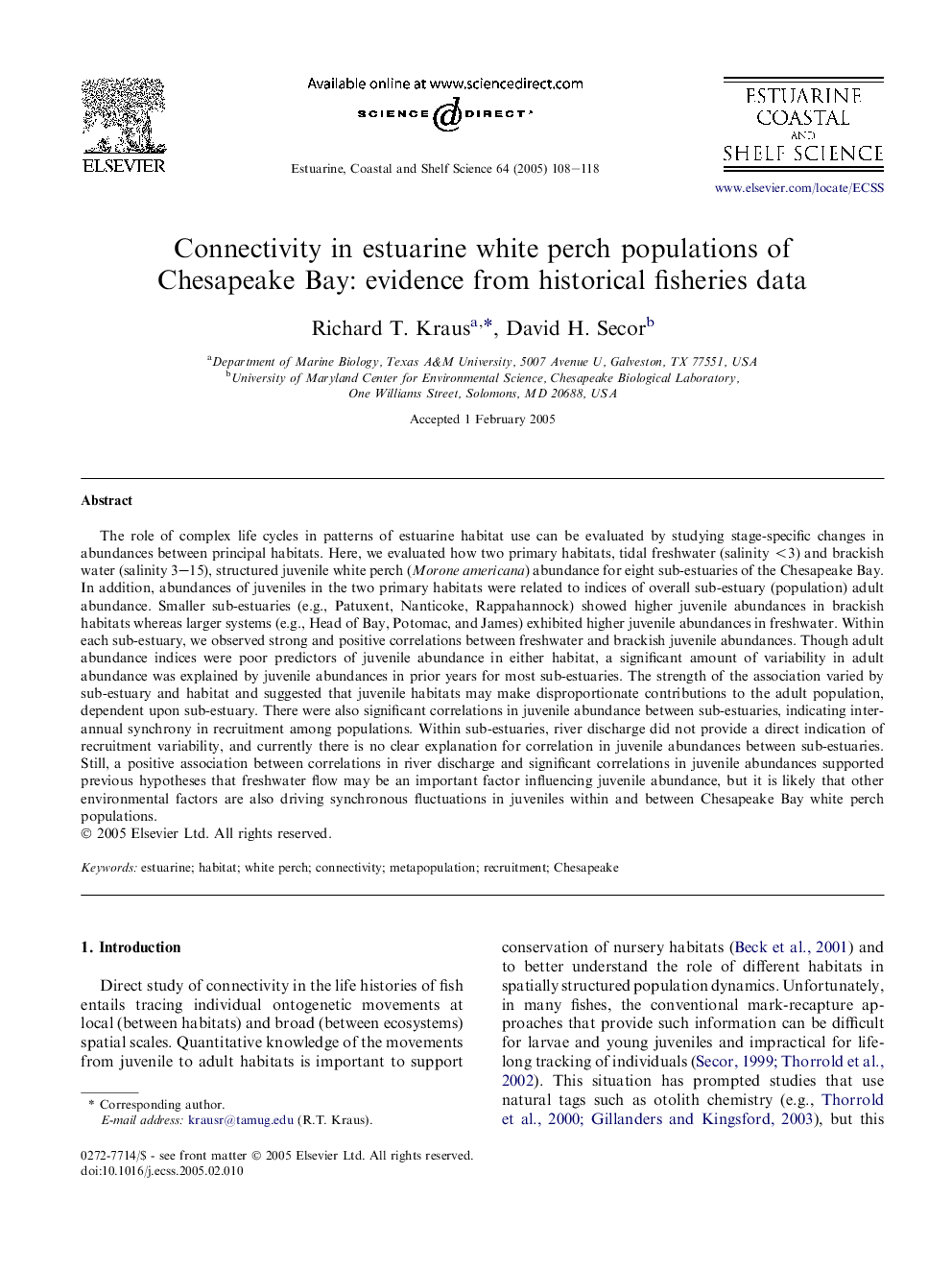| Article ID | Journal | Published Year | Pages | File Type |
|---|---|---|---|---|
| 9480839 | Estuarine, Coastal and Shelf Science | 2005 | 11 Pages |
Abstract
The role of complex life cycles in patterns of estuarine habitat use can be evaluated by studying stage-specific changes in abundances between principal habitats. Here, we evaluated how two primary habitats, tidal freshwater (salinity <3) and brackish water (salinity 3-15), structured juvenile white perch (Morone americana) abundance for eight sub-estuaries of the Chesapeake Bay. In addition, abundances of juveniles in the two primary habitats were related to indices of overall sub-estuary (population) adult abundance. Smaller sub-estuaries (e.g., Patuxent, Nanticoke, Rappahannock) showed higher juvenile abundances in brackish habitats whereas larger systems (e.g., Head of Bay, Potomac, and James) exhibited higher juvenile abundances in freshwater. Within each sub-estuary, we observed strong and positive correlations between freshwater and brackish juvenile abundances. Though adult abundance indices were poor predictors of juvenile abundance in either habitat, a significant amount of variability in adult abundance was explained by juvenile abundances in prior years for most sub-estuaries. The strength of the association varied by sub-estuary and habitat and suggested that juvenile habitats may make disproportionate contributions to the adult population, dependent upon sub-estuary. There were also significant correlations in juvenile abundance between sub-estuaries, indicating inter-annual synchrony in recruitment among populations. Within sub-estuaries, river discharge did not provide a direct indication of recruitment variability, and currently there is no clear explanation for correlation in juvenile abundances between sub-estuaries. Still, a positive association between correlations in river discharge and significant correlations in juvenile abundances supported previous hypotheses that freshwater flow may be an important factor influencing juvenile abundance, but it is likely that other environmental factors are also driving synchronous fluctuations in juveniles within and between Chesapeake Bay white perch populations.
Related Topics
Physical Sciences and Engineering
Earth and Planetary Sciences
Geology
Authors
Richard T. Kraus, David H. Secor,
